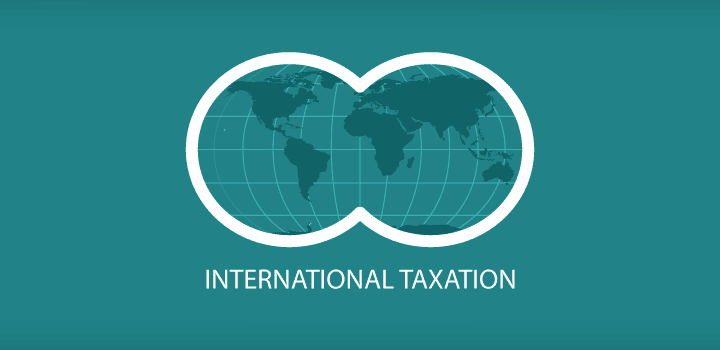Going global is impressive, yet is much more complex than meets the eye. To successfully convert a domestic business to an international one, a host of factors needs to be considered. Further, on one side the advent of internet has been a key business enabler and a leveler for SMEs, on the other side it expects to bring about disruption in the traditional business models. India is now the second largest Internet economy and E-Commerce is expected to be 10 times the current size by 2020.
Presently, India fares to be the top destination for Foreign Direct Investment (FDI). Strong FDI inflows depict India’s robustness as an investment destination for businesses in an environment of slow global growth. Further Government of India has also eased FDI norms in major sectors like Insurance, Defence, Construction, Media, Civil Aviation etc.
FACTORS AFFECTING INTERNATIONAL BUSINESS:
- Country Profile
- Investment Climate and Foreign Trade
- Market Knowledge and Local Competition
- Language and Communication Barriers
- Organizational Readiness
- Entry Strategies / Form of Business Enterprise
- Funding of Business
- Repatriation of Funds
- Tax Code
- Exit Strategy
[A] INBOUND INVESTMENTS
[1] ENTRY OPTIONS IN INDIA:
- Liaison Office
- Branch office
- Local Indian Subsidiary Company
- Project Office
- Limited Liability Partnership (LLP)
[2] COMPARATIVE MATRIX OF VARIOUS FORMS OF BUSINESS
| Sr. | Particulars | Liaison Office | Project Office / Branch Office | Subsidiary Company | LLP |
| 1 | Legal Status | Represents the Parent Company | Extension of Parent Company | Independent Legal Status | Independent Legal Status |
| 2 | Process of Setup | Easy | Easy | Complex | Moderately Complex |
| 3 | Scope of Activities | Liaison Activities | Restricted Scope | Significant flexibility | Activities for which 100% FDI is allowed without any approval |
| 4 | Compliance Requirements | Limited | Limited | High | High |
| 5 | Income-tax Rate | Generally, no tax liability since it cannot carry out any commercial or income-earning activities | 43.26%* on net income basis | 33.99%# on net income basis. If MAT is levied, it is levied at 20.96%^ of its book profits) | 33.99%# on net income basis. If AMT is levied, it is levied at 20.96%^ of its book profits) |
| 6 | Ease of Exit | Easy | Easy | Complexity depending on type of strategy adopted | Complexity depending on type of strategy adopted |
* 43.26% (40% plus 5% SC plus 3% cess thereon) for Assessment Year 2015-16
# 33.99% (30% plus 10% SC plus 3% cess thereon) for Assessment Year 2015-16
^ 20.96% (18.5% plus 10% SC plus 3% cess thereon) for Assessment Year 2015-16
[3] FUNDING OF INDIAN BUSINESSES:
Funding of Corporate Organizations
- Equity Share Capital
- Preference Share Capital
- Debentures and Borrowings
- External Commercial Borrowings
- ADRs, GDRs, FCCB
- Listing of Debentures to raise funds
Funding of LLP
LLPs are not permitted to avail ECB. Therefore, capital invest is the only mode of funding for LLPs.
[4] COMMON TRANSACTIONS BETWEEN ASSOCIATED ENTERPRISES
- Purchase / Sale of raw materials, consumables or any other supply;
- Purchase / Sale of traded / finished goods;
- Transactions of Intangible property;
- Provision of Services;
- Lending / Borrowing of Money;
- Purchase / Sale of marketable securities, issue and buyback of equity shares, debentures, preference shares etc.;
- Transaction in respect of mutual agreement / arrangement;
- Transaction arising out of business reorganization / restructuring; etc.
[B] OUTBOUND INVESTMENTS
[1] KEY DRIVING FACTORS:
- Overseas Expansion
- Overseas Listing
- Spreading of Risk
- Ensuring Supply Chain
- Access to Wider Global Markets
[2] ROUTES FOR OUTBOUND INVESTMENT:
- Specifically Prohibited Activities
- Automatic Route through Authorised Dealer
- Approval Route – Prior approval of RBI
[3] MODES OF OUTBOUND INVESTMENT
Joint Venture
Foreign entity formed, registered or incorporated in accordance with the laws and regulations of the host country in which the Indian party makes a direct investment.
Wholly Owned Subsidiary
Foreign entity formed, registered or incorporated in accordance with the laws and regulations of the host country, whose entire capital is held by the Indian Company.
[4] FUNDING OPTIONS:
- Draw Foreign Exchange from AD Bank
- Proceeds of ECB / FCCBs
- Proceeds of foreign currency funds raised through ADRs / GDRs
- In exchange of ADR / GDRs
- Swap of Shares
- Balance held in EEFC Account of Indian Party
- Capitalization of Exports
INCOME TAX AND BASIC CONCEPTS OF INTERNATIONAL TAXATION
- Incidence of Tax
Income Tax Act, 1961 (the Act) governs the Income tax liability in India. Income tax liability in India is determined on the residential status. For a resident, the world wide income is taxable. For a non-resident, India sourced income is taxable.
India sourced income is income earned through a business connection in India or through transfer of a capital asset, being any share or interest in a company incorporated outside India, deriving its value substantially from assets located in India or through other Indian sources.
- Double taxation in cross border transactions
A taxpayer entering into a cross border transaction may be liable to be taxed in his home country (i.e. the country of his fiscal residence) on his world income. This is generally known as the ‘residence rule’ of taxation. He may also be taxed in the country from which he earns income even though he is not a resident of that country. This is referred to as ‘source rule’ of taxation. The purpose of Double Taxation Avoidance Agreements (DTAA) between two nations is mainly to avoid such double taxation.
- Beneficial Provisions to apply
If there is a DTAA between India and the country of non-resident, the provisions of the Act or the DTAA, whichever is more beneficial shall apply. However in order to be eligible for DTAA benefits, a non-resident is required to obtain a valid Tax Residency Certificate (TRC) issued by revenue authorities of the country of residence and other information or documents as may be prescribed.
- Who can access a tax treaty
A taxpayer, to be able to access a treaty, should necessarily be a ‘resident’ of atleast one of the two countries of which the treaty is to be accessed.
- Treaty Shopping
If only a ‘resident’ of one of the two states can access a treaty, a resident of a third country cannot, therefore, have any access to a treaty. However, when a resident of a third country, establishes an entity in one of the two countries that have entered into a treaty in order to take advantage of the provisions of that treaty, it is called ‘treaty shopping’.
- Limitation of Benefits (LOB)
Some treaties make specific provisions so as to ensure that the persons taking advantage of the treaty are, in substance, residents of one of the two contracting states. Different objective tests are prescribed in the treaty. The person failing to satisfy the tests prescribed in the treaty in this regards would be deprived from the benefits available in the treaty.
- Beneficial Owner
Most of the treaties provide that the concessional tax treatment provided under the treaty would be available if the person concerned is the “beneficial owner” of the relevant income. Control is regarded as the most important factor to determine beneficial ownership.
- Force of Attraction Rule (FAR)
Generally as per the normal provisions, only the profits attributable to a Permanent Establishment(PE) are taxable in the source country. However, the basic philosophy underlying Force of Attraction Rule is that when an enterprise sets up a PE in another country, it brings itself within the fiscal jurisdiction of that other country to such a degree that such other country can properly tax all profits of that enterprise derived from that country – whether through PE or not.
FAR provides that the profits earned by the enterprise would be attributed to the PE if such profits have arisen to the enterprise from direct sale of same or similar goods, as are effected through PE, or through other activities (say rendering of services) under same or similar circumstances in which its PE does.
However, certain treaties provide that if it can be proved that the PE has not played any role in the direct business of the HO, in such a case Force of Attraction need not be applied.
- Transfer Pricing
Transfer Pricing provisions provide that profit arising from international transactions between two or more associated enterprises should be computed having regard to “arms length price”. Arm’s length price is a price that is adopted in similar transactions between to or more unrelated parties.
- Thin Capitalization
Thin Capitalization rules are found in many countries to provides a deterrent against artificial structuring of capitalization with a view to create lower tax burden. Interest on loan is a tax-deductible expenditure, while dividend on shares is not. As a result of this , a tax payer in country ‘A’ desiring to set up a business in country ‘B’ may opt for capitalizing its business in such a manner that there is a higher debt and a lower capital flowing from the owners.
Domestic laws of some countries have formulated rules against such ‘thin capitalization’ by providing some minimum capitalization norms. Thus thin capitalization is a tool used by tax authorities to prevent what they regard as a leakage of tax revenue as a consequence of the way in which a company is financed.
- Tax Sparing
Tax treaties provide for a mechanism by which the home country of a tax payer grants him credit in respect of the taxes paid by him in the source country in accordance with the provisions of the treaty.
- Underlying Tax Credit
In the concept of underlying tax credit, the credit is given for the tax paid by the underlying entity. It is also known as “Indirect tax credit” method because shareholder receives credit for tax, which it has only paid indirectly.
- General Anti Avoidance Rules (GAAR)
GAAR is an anti-avoidance regulation of India. The regulation allows tax officials to deny tax benefits, if the transactions lack commercial / economic substance, Rights / obligations are not at arm’s length, transaction is not for a bona-fide purpose or is an abuse of provisions of the Act. GAAR provisions shall be applicable from 1 April 2017.
If you have found this blog to be useful, you may share with your friends. Thanks!


